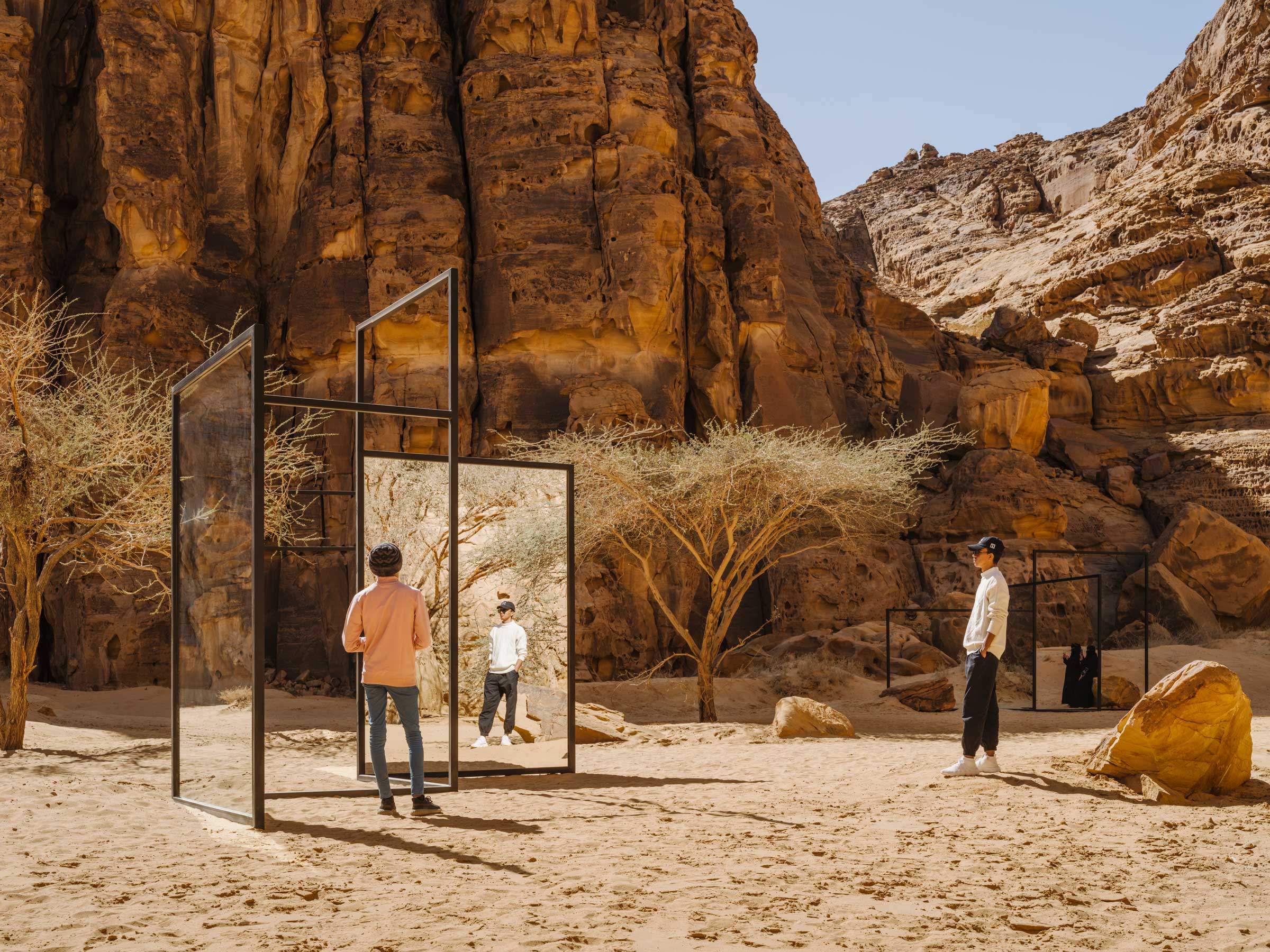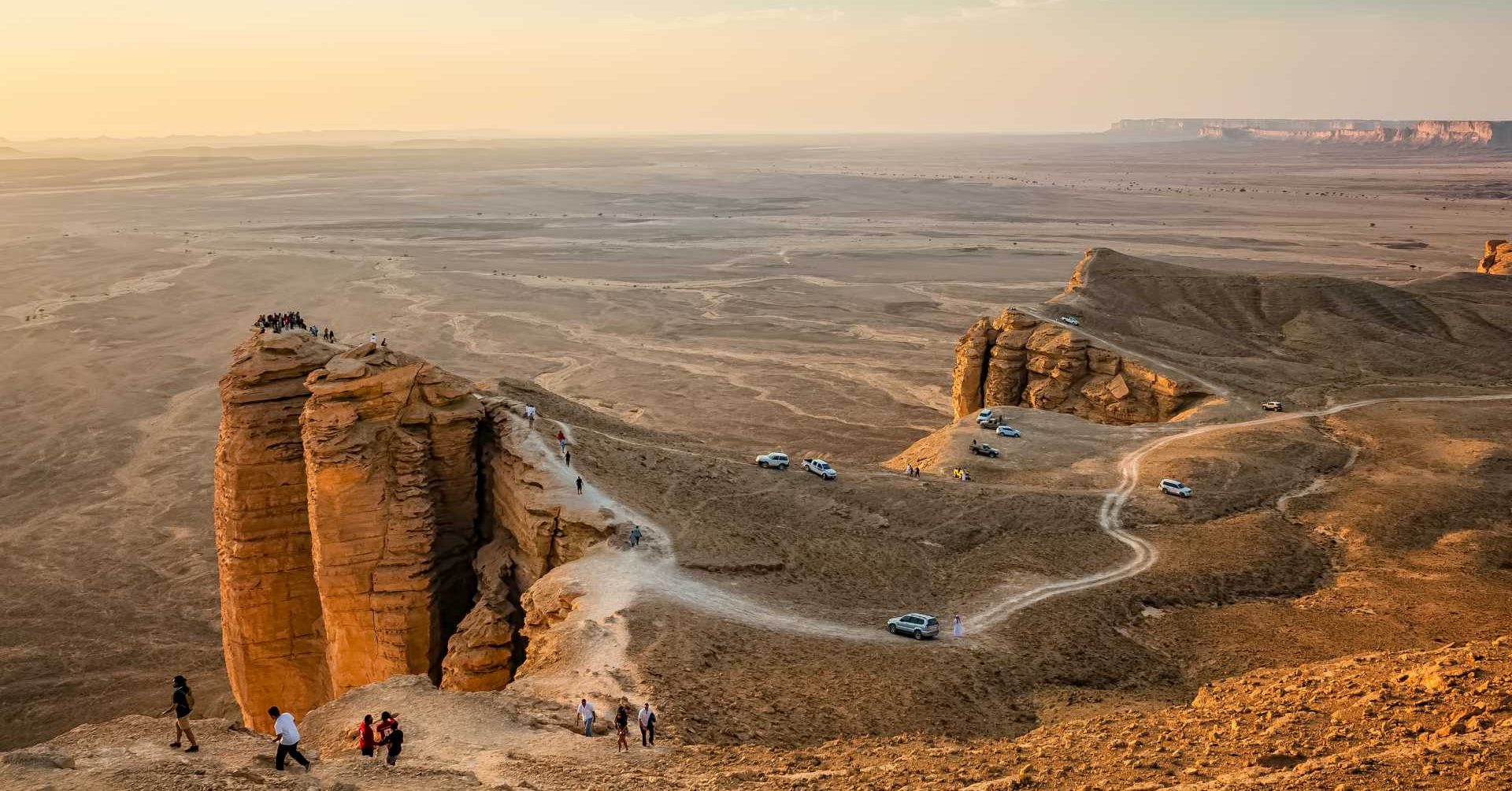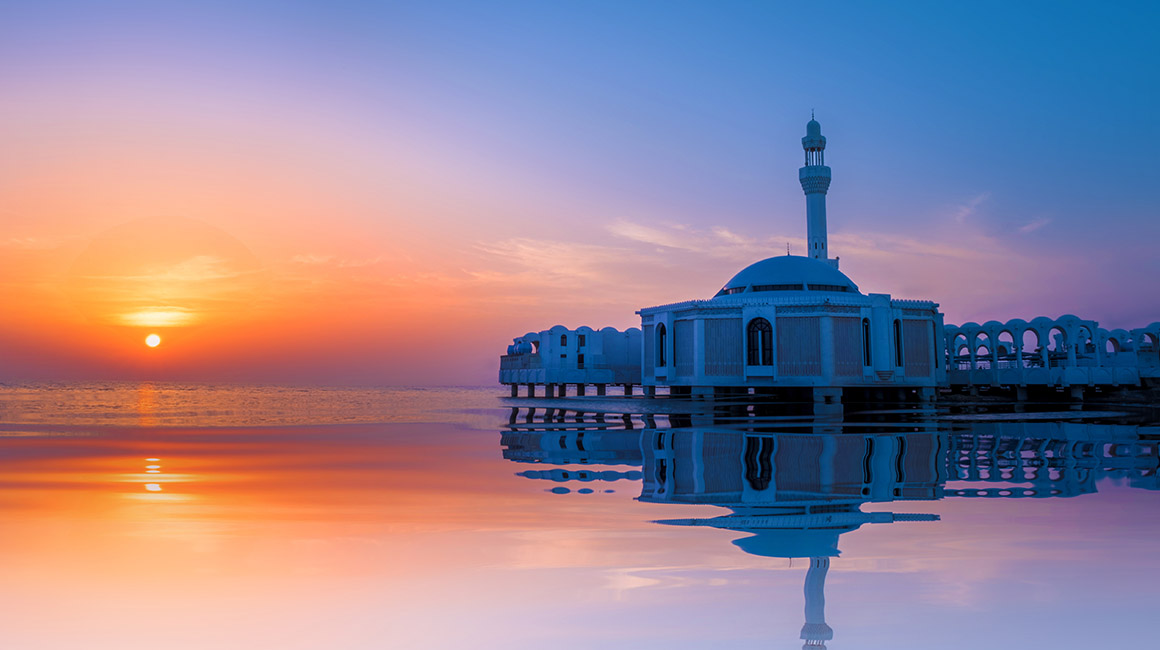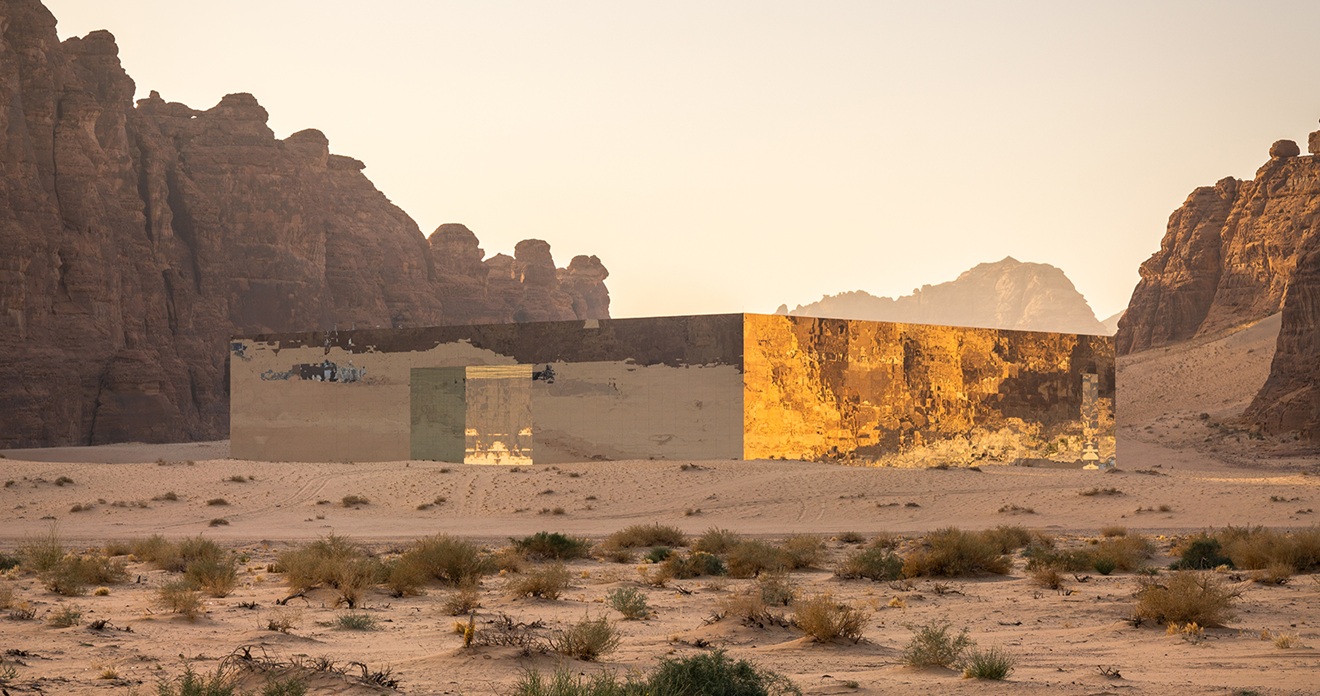Once known mainly for religious pilgrimages and vast stretches of desert, Saudi Arabia is drawing growing interest from travelers worldwide, including Egypt. With simple visa rules, Saudi Arabia opens the door to a country balancing deep tradition with rapid transformation. From the cliffs outside Riyadh to the coral-framed shores of Jeddah and the ancient tombs of AlUla, the Kingdom offers a glimpse of both its past and its evolving place in the region.
Riyadh’s Edge of the World
The Kingdom’s Capital is a modern city blending ultramodern architecture with deep-rooted heritage. One of its premier locations includes the Edge of the World. The dramatic cliff, known as Jebel Fihrayn, is about 100 kilometers away from Riyadh at the end of the Tuwaik Mountain range.
The mountain features a distinctive, dry, soil-free terrain, dotted with samar and acacia trees across its stretches. On the higher, stable sand dunes, ghodi trees and pole plants dominate the landscape. The rugged, carved mountains stand as evidence of long-term resistance to erosion and the passage of time. Fossils of snails and other marine organisms found in the area reveal that it was once part of an ancient seabed.
Jeddah’s Al Rahma Floating Mosque
On the edge of the Red Sea in Jeddah stands the Al Rahma Floating Mosque, also known as the Fatima Al-Zahra Mosque. Built in 1985, the mosque is supported by pillars that make it appear to float when the tide rises, covering about 2,400 square meters.
The structure includes a main dome surrounded by 52 smaller ones, 23 outdoor umbrellas, and 56 windows designed in traditional Islamic style. Its bright white exterior and simple symmetry have made it one of Jeddah’s most recognizable landmarks.
Visitors come to pray or walk the surrounding promenade, where views of the sea frame the mosque’s clean lines. The site is especially striking at sunrise and sunset, when its reflection glows on the surface of the water.
Saudi Arabia’s Open-Air Museum
AlUla, located about 350 kilometers northwest of Medina, is often called Saudi Arabia’s open-air museum. Covering roughly 22,500 square kilometers, the region blends lush oases, striking sandstone landscapes, and centuries-old heritage sites into one vast living gallery.
Hegra, the archaeological early Islamic site within AlUla, is Saudi Arabia’s first United Nations Educational, Scientific and Cultural Organization (UNESCO) World Heritage Site, recognized for its well-preserved remnants of the Nabataean civilization and early Islamic heritage.
Hegra features nearly 100 tombs carved into sandstone cliffs, including notable sites such as the Tomb of Lihyan, Son of Kuza, and the Diwan tombs, striking examples of Nabataean craftsmanship and design.
Beyond its archaeological wonders, AlUla is home to dramatic rock formations like Elephant Rock, known as Jabal AlFil, and restored heritage villages that showcase the region’s long history.
The area’s desert ecosystem supports diverse wildlife and vegetation, offering visitors the chance to explore its natural beauty through guided trails and open landscapes. Modern attractions include the Maraya Concert Hall, the world’s largest mirrored structure, which hosts international concerts, exhibitions, and cultural events, welcoming visitors from all over the world.
Visa Status and Entry for Egyptians
Egyptian travelers can visit Saudi Arabia for tourism or business by applying through the Saudi embassy or consulate for a visa valid for up to one year, allowing multiple entries and stays of up to 90 days per visit. They can also apply for transit visas, available for short stays to perform Umrah, enjoy a brief vacation, attend events such as Riyadh Season, or explore tourist attractions across the Kingdom.
For those interested in leisure travel, Saudi Arabia is emerging as a versatile destination, thanks to its efforts to ease visa restrictions and expand heritage and leisure tourism. With its lively cities, tranquil deserts, and ancient ruins, the Kingdom offers travelers a wealth of enriching experiences.











Comments (0)